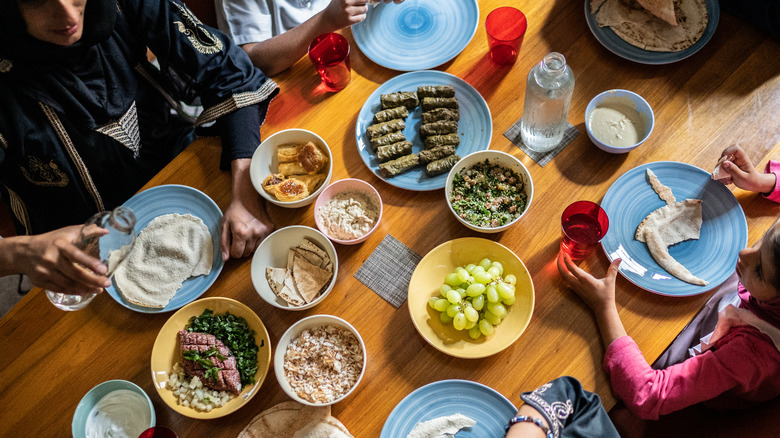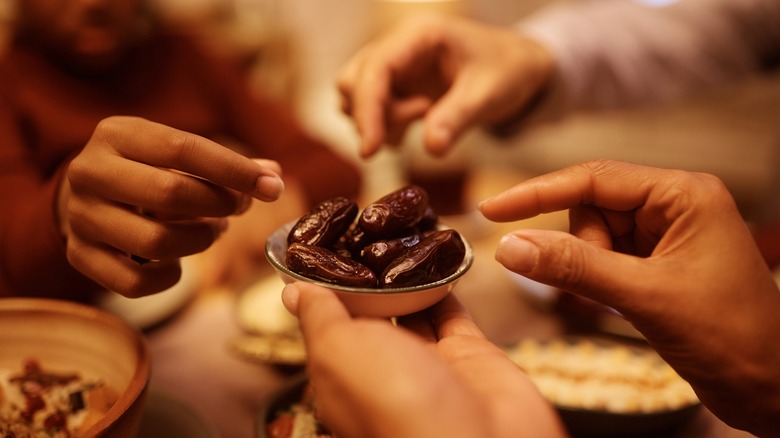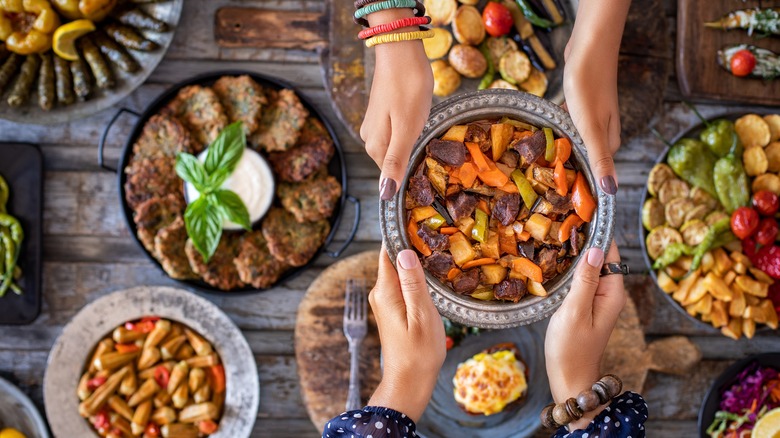Suhoor And Iftar: The Differences Between The 2 Ramadan Meals
This March, the worldwide Islamic community will kick off Ramadan, a month of fasting and prayer. During this sacred period, Muslims fast during the day, abstaining from food and drink between sunrise and sunset. Ramadan is based on the lunar calendar, which shifts by 11 days each year; over a 33-year cycle, Ramadan will pass through the entire calendar. In 2024, it begins on March 11 and ends on April 9. During this month of fasting, Muslims study the Qur'an extensively and focus on their spirituality.
During the fast, Muslims are permitted to eat and drink twice daily. The first meal, before sunrise, is called suhoor. The second and final meal of the day is called iftar and doesn't arrive until after the sun sets. Each meal is associated with specific prayers and traditional foods, and both usually involve lots of community socializing. Ramadan concludes with Eid ul-Fitr, a prominent Muslim holiday and time of celebration.
Morning and evening meals
Suhoor, translated to "the last part of the night" in Arabic, is eaten before sunrise. Depending on geography and season, suhoor can potentially fall very early in the morning. Some families will wake up and celebrate suhoor before returning to bed and starting their day at a more typical hour.
Because Muslims don't consume any calories throughout the day, Ramadan breakfast foods are often packed with nutrition and fuel for the day ahead. Popular dishes worldwide include ful medames, a fava bean stew popular in Egypt; nasi lemak, a Malaysian dish created with coconut rice; and adasi, a Mediterranean lentil soup. Western diets usually include nutritious fare filled with protein and carbohydrates, like eggs and oats.
When the sun has set, Muslims sit down for iftar, which means "breaking the fast." Traditionally, dates and water are consumed during iftar, although the meal can consist of more substantial foods as well. This meal is a social occasion, and it is common for people to invite friends and family over for iftar. Mosque community centers often host iftars to bring people together after a long day of fasting. After the meal, a Ramadan prayer called Taraweeh is said, and a portion of the Qur'an is read aloud.
Food for Eid ul-Fitr
Muslims conclude their month of fasting with Eid ul-Fitr, a festive holiday commemorating the end of Ramadan. Free from the constraints of fasting, Muslims from all corners of the globe prepare their favorite dishes for this celebration. While recipes for Eid ul-Fitr are different in every country, hearty stews are always a crowd favorite. A Pakistani dish, Nihari is made from lamb or beef slow-cooked in juices and infused with spices like nutmeg and ginger. Smothering a bowl of nihari with a thick dollop of yogurt is a great way to enjoy a hearty end to Ramadan.
For a sweet kick to finish the meal, you can never go wrong with baklava. This layered pastry is filled with honey and nuts, creating a dense pile of flakey goodness. Chopped pistachios and walnuts add a serious crunch to the dish that's tempered by the butter-soaked layers of gooey phyllo dough. While making baklava is labor-intensive, it is an excellent option for feeding a large group and can be eaten hot or cold.


